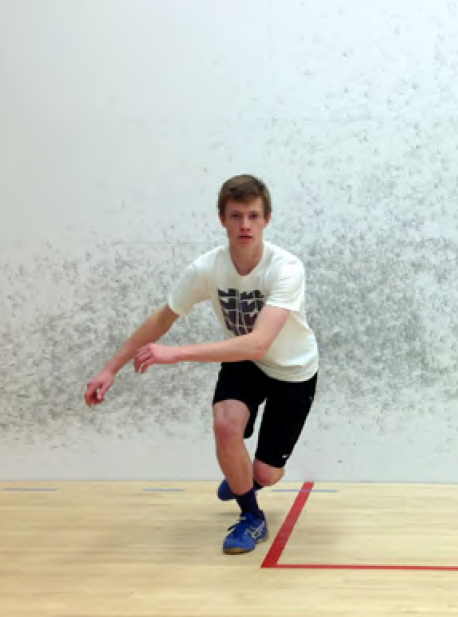By Damon Leedale-Brown, Sports Scientist & Conditioning Specialist
In this final article on deceleration we will look at a series of exercises that can be integrated into your training to improve your ability to control speed and movement on the squash court.
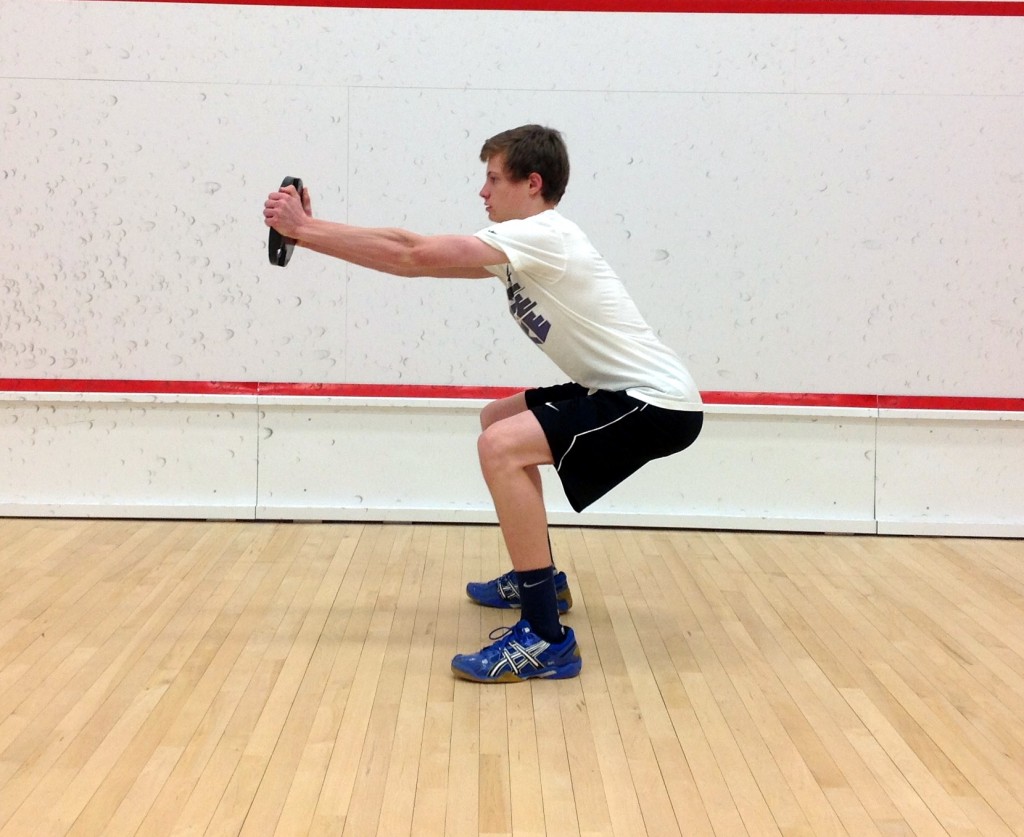
Drop Squat
- Start standing with feet slightly wider than hip width apart.
- Drop rapidly into a parallel squat position and hold this position for a full second before driving back out of squat to start position.
- Can be performed with med ball or weight plate held at chest and pressed quickly out in front of body when you drop into squat.
- Progressions can be made by dropping off a small step or box (approx 6”) and then increasing height in 6” increments as physical ability develops.
- Attention should be paid to excellent control and alignment when dropping into squat position.
- Start with 3 sets of 6-10 drop squats
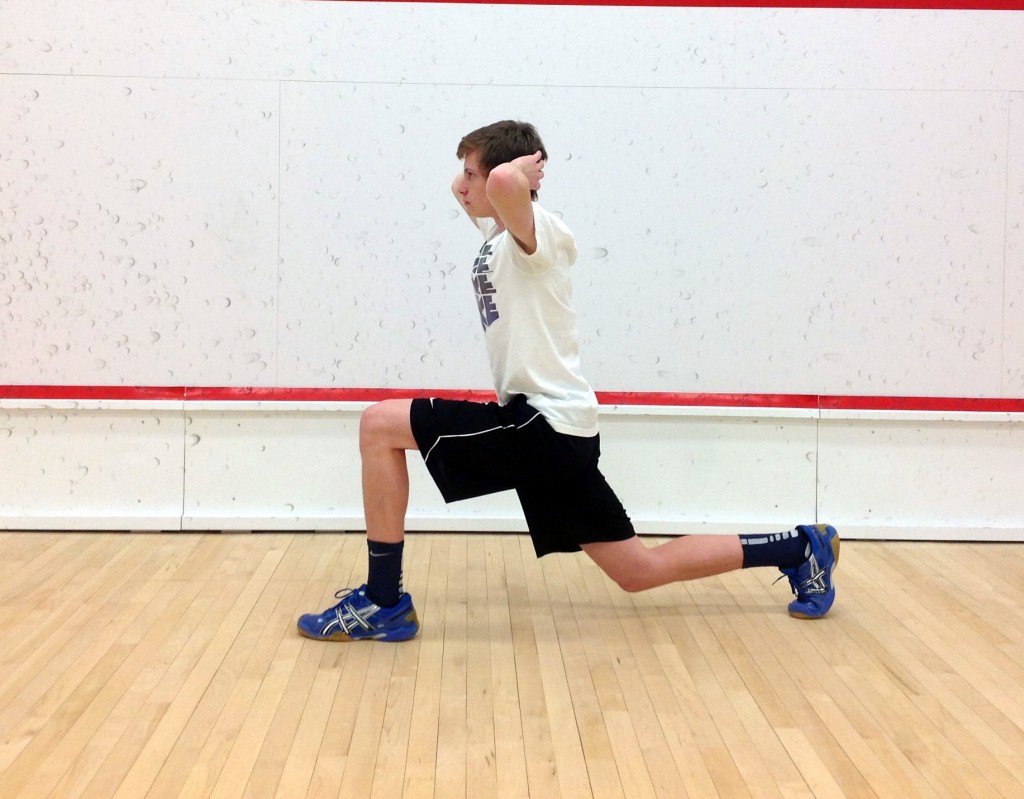
Drop Lunge
- Start standing with feet hip width apart
- Drop rapidly into a split lunge position (thigh of front leg parallel to floor) and hold briefly before driving out back to standing position.
- Alternate lead leg on each drop lunge
- Progress resistance and loading by using bar or dumbbells which you drive overheard as you drop into split lunge position.
- For those familiar with Olympic lifting, this is, in effect, a lower level version of a ‘Split Jerk’ exercise.
- With bodyweight, perform 3 sets of 6-10 reps each leg leading.
- With resistance, perform 3 sets of 4-8 reps each leg leading according to weight used and physical abilities of athlete.
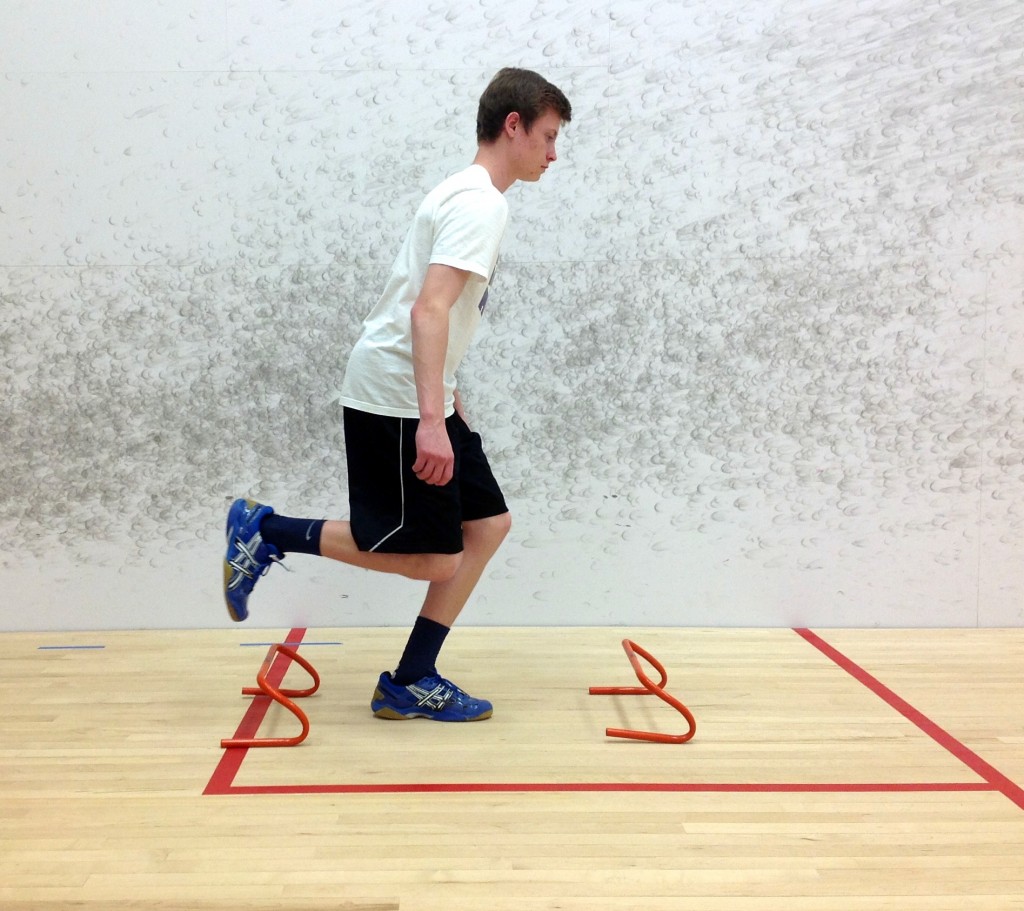
Jumps & Hops with Hold on Landing
- Start with a two footed jump. Jump forward and, on landing, come rapidly into a squat position with thighs just above parallel to floor.
- Start with smaller distance jumps to get familiar with the technique of the exercise and then progress to longer jumps as your skill and physical ability develop. Make sure to emphasize the softness and control on landing as you come into a strong squat position.
- Use cones to mark out target distances for your jumps if that helps, or see how many controlled jumps it takes you to cover the length of the squash court.
- A more advanced version would be to perform single leg hops with hold on landing in a semi-squat position. Not an easy exercise to perform, so start with very small hops before progressing to longer distances.
- For the hops, perform 3 sets of 5-8 jumps on each leg.
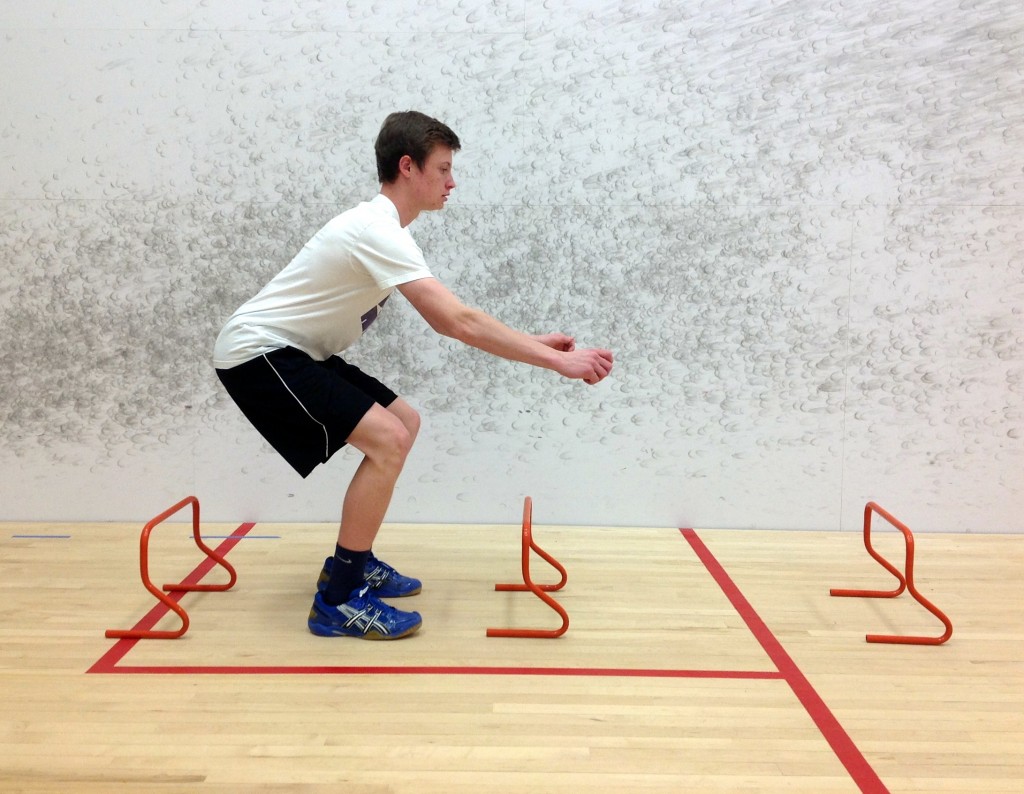
Hurdle Jump & Hold
- A similar concept to the jumps described above but now with a focus on controlling the body from height as opposed to distance.
- Start with 12” hurdles and focus on a quiet stable landing in a semi-squat position. Hold the landing for a full second before starting the next jump.
- Hurdle height can be progressed up to 30” depending on the athlete’s physical ability.
- Perform 3-5 sets of 5 hurdle jumps.
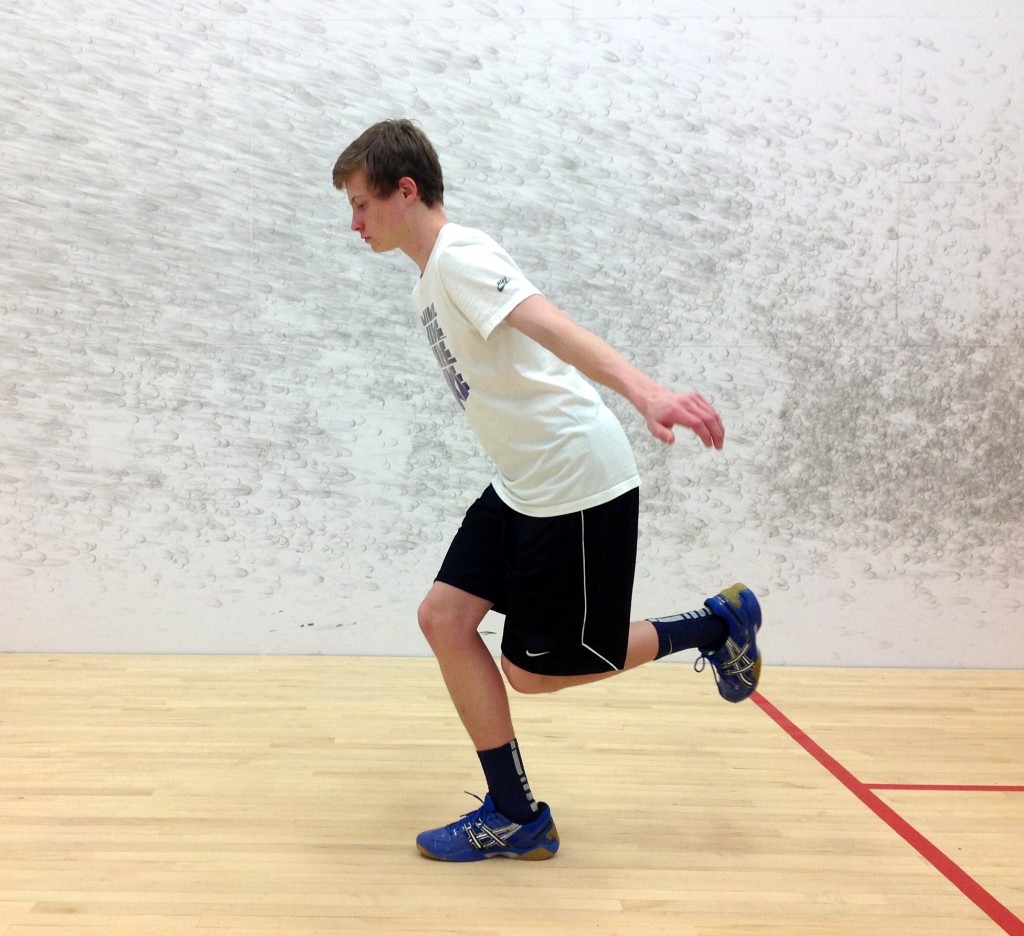
Hurdle Hop & Hold
- Much more challenging than the jump is a single leg hop over the hurdle.
- Take off and landing is on the same leg.
- Perform with 6” hurdles
- Perform 3-5 sets of 5 hurdle hops on each leg.
Skater Hops and Hold
-
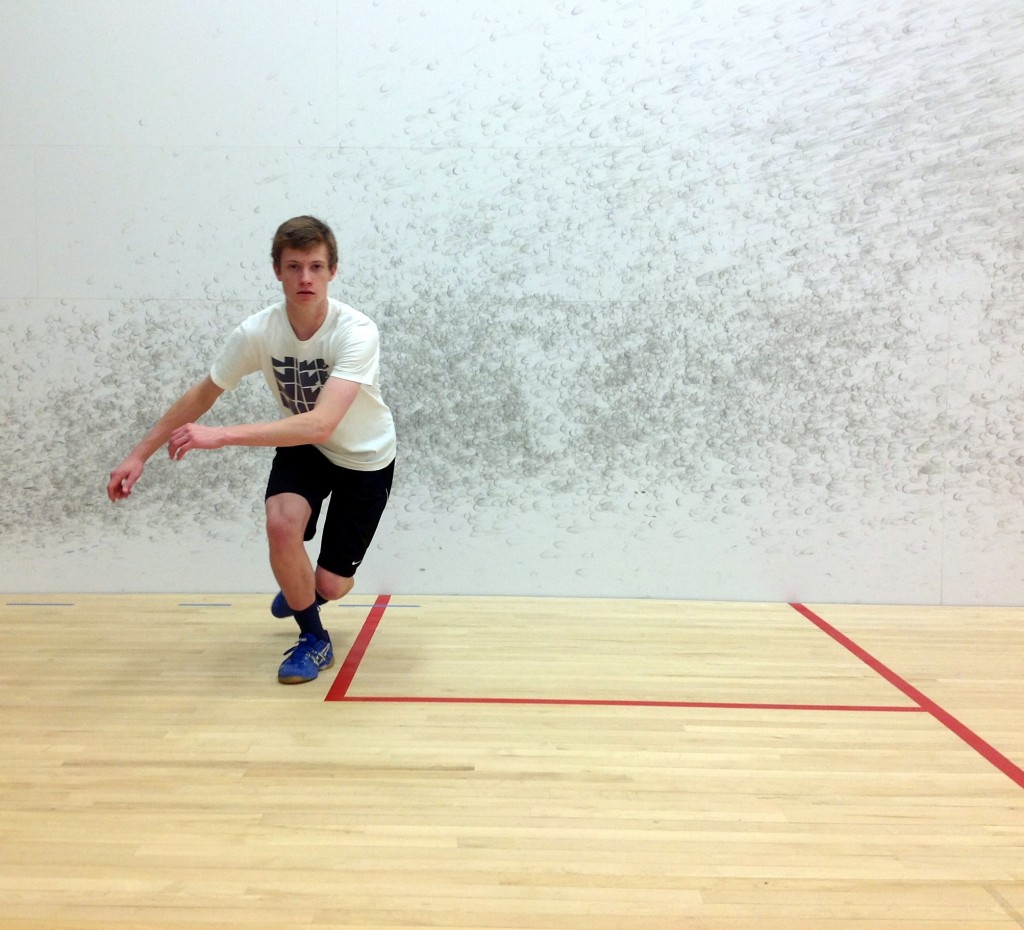
Skater Hop & Hold landing position. Keep the body facing forward and jump sideways from right leg to land on left leg.
- Focus on a soft and stable landing and hold for at least a full second before jumping back to the opposite side.
- Focus on jumping both up and across—it should not simply look like a sideways step—there should be height in the jump.
- Perform 3 sets of 5 jumps onto each leg.
I hope the last three articles have given you a better understanding of why deceleration and controlling speed is such a vital aspect of moving well on a squash court. Introducing the suggested training exercises in both this and the previous issues should help to make a great all round improvement in this area of your game.


